The following images are from the top 100 winners of the first two years of the Close Up Photographer of the Year (CUPOTY) Awards.
I found myself captivated both by the photographs and also by the stories of people who devote themselves to seeing the world of the tiny. The CUPOTY website includes details of how photographers captured and processed the images, way too technical for me. But it also includes stories about tying a portable fire ladder to a tree to climb down into a frozen cauldron to get a picture of a frozen air bubble inside an icicle. Or a guy who is fascinated by the patterns formed during the crystallization of callous remover (you will be too.) Or a photograph of breast ducts, spherical bundles of milk-producing cells encircled by tiny muscle-like cells that contract to push milk into the ducts that lead to a suckling infant.
I hope you will share my interest in both what is photographed and how the picture was captured.
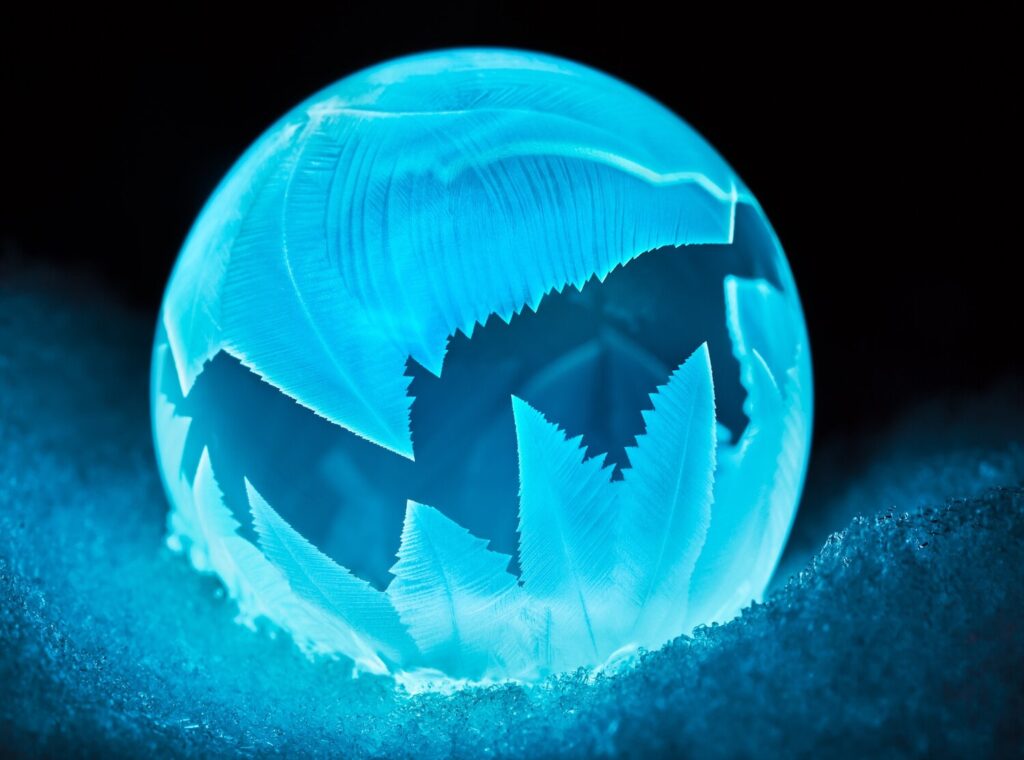
By Don Komarechka, Canada. “What if you could make a freezing soap bubble into its own light source? By combining invisible ink that fluoresces blue with dish soap and white corn syrup (glucose syrup), you can create a bubble that freezes beautifully. Add in a custom-built ultraviolet flash and you’ll see it illuminate from within, glowing like a lantern of frost. Photographed in Barrie, Ontario, Canada on a cold winter night as a crazy ‘what if? ‘experiment.”
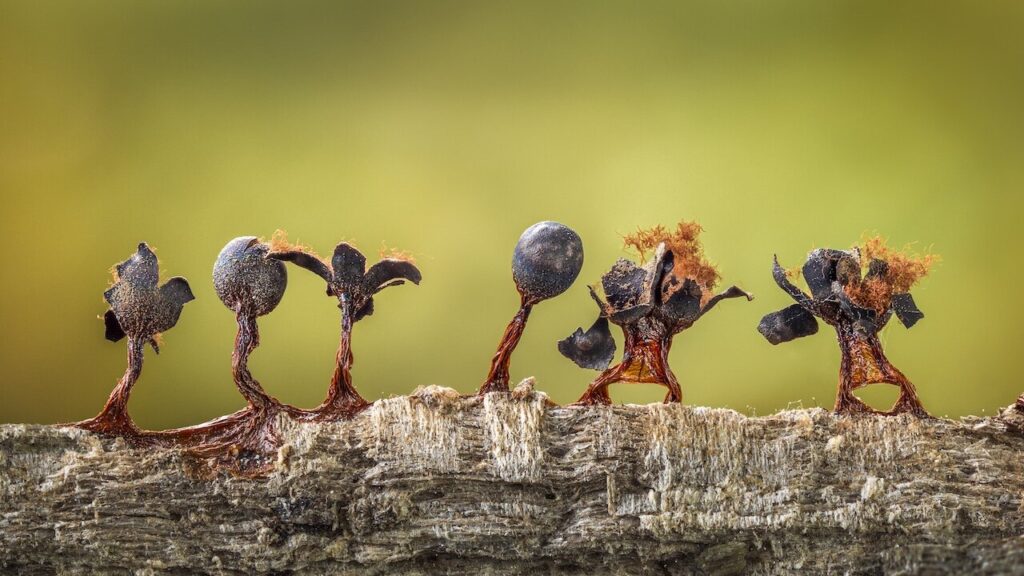
Slime Moulds on Parade by Barry Webb a British Gardener and Photographer. This image shows a line of 2.5mm high, fruiting bodies of the slime mould growing on a decaying beech trunk. When I looked through the magnifier, I noticed that the fruiting bodies resembled people standing in a line – the holes in the stems looked like little legs!

By Anna Ulmestrand, Sweden. A frozen airbubble inside an icicle. “Close to where I live there is an old abandoned mill by a pond. Water flows down the mountain into a giant cauldron and it creates huge icicles. The problem is how to get there – there are no paths or rocks to step on. Thankfully, I discovered a solution in the form of a portable fire ladder! Walking from the car to the mill took time, and was even harder because I was wearing thick clothes and carrying the ladder. To get into position I tied the ladder to a tree and used it to climb down. As usual, I had no idea what I was going to find, apart from plenty of ice, but I wasn’t disappointed when I spotted this frozen air bubble inside an icicle.”

By Norm Barker, BioMedical/Scientific Photographer at Johns Hopkins School of Medicine, US. Clinical microbiologists use culture plates that identify bacteria and fungi that cause infections in patients. These types of test are done by the millions at large academic medical centers.
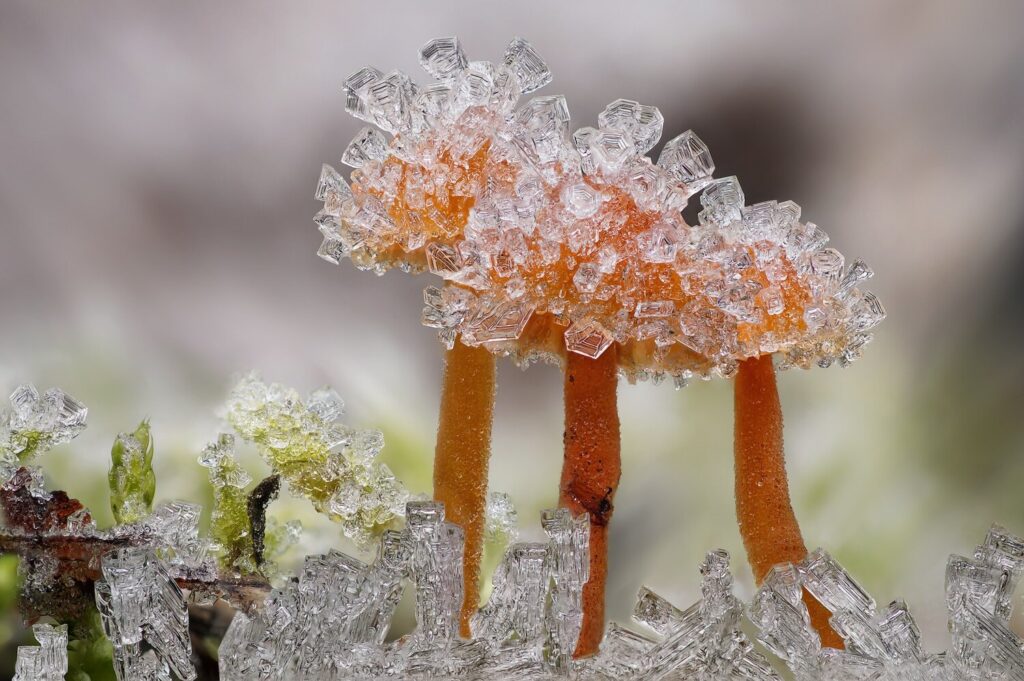
By Alexander Mett, Germany. This picture of a small group of mushrooms with icy caps was taken on a very cold winter’s day. For this picture I lay flat on the ice cold and hard ground to take the series of pictures as calmly as possible.
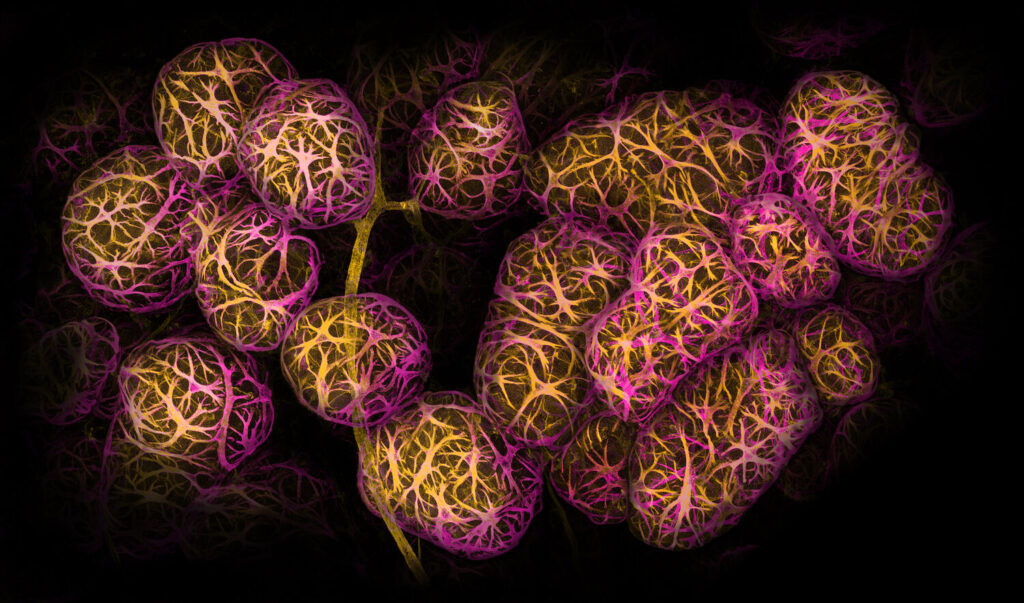
By Caleb Dawson, Australia. During pregnancy and lactation, the tree-like breast ducts form spherical alveoli – the sites where milk is produced. Each alveolus contains many milk-producing cells that are encircled by tiny muscle-like cells, revealed here by yellow and purple dyes. The muscle-like cells contract in response to suckling to push the milk from the alveoli, into the ducts and to the infant.

By Marek Mis, Poland.
Callus remover (used to remove areas of thickened skin) is one of my favourite substances for crystallisation. I’ve been taking photographs of this substance for a long time now and almost always find something new to capture.
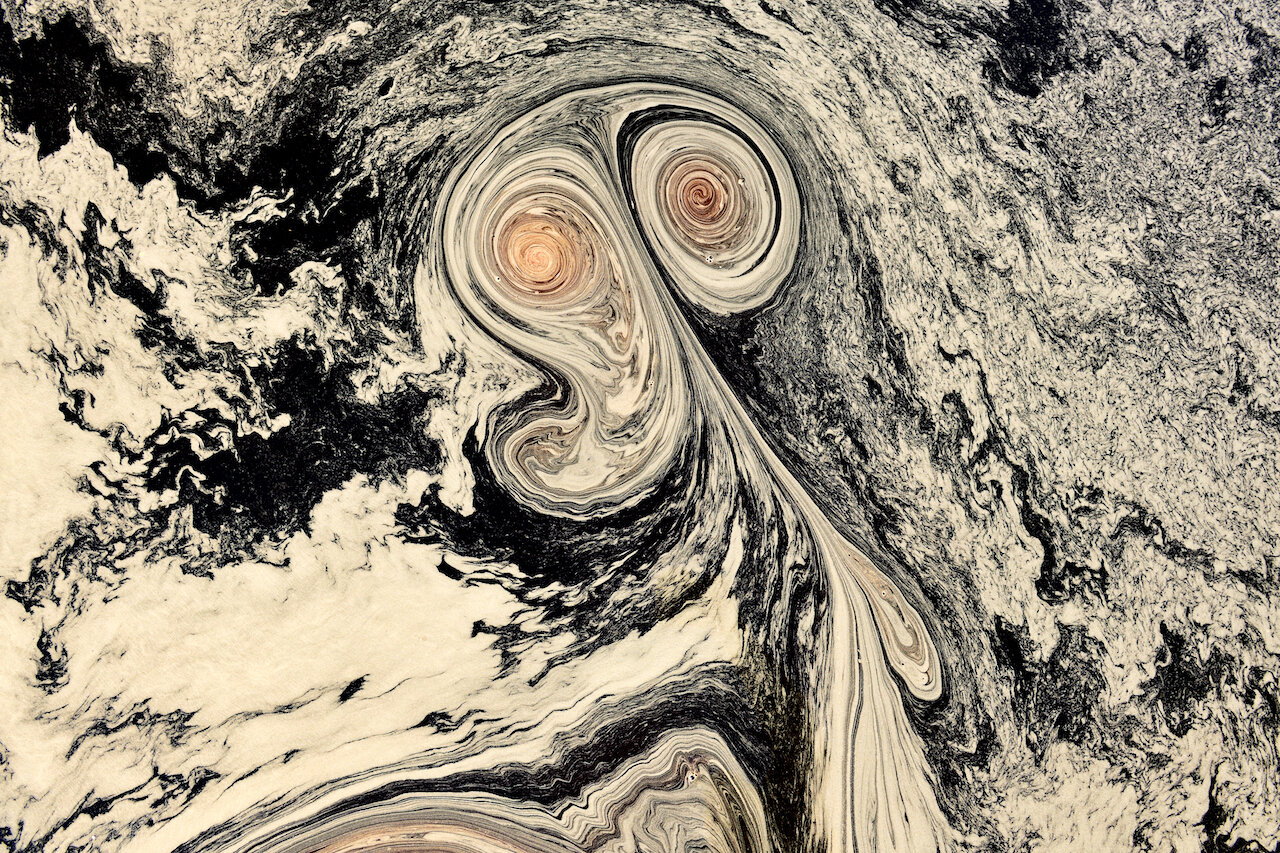
By Sergio Tapia, Spain. Río Tinto is one of the oldest areas with mining and metallurgic activity in the world. The most acid pH and lack of oxygen, make it a unique place. After a morning of heavy rain over a small reservoir, big blocks of foam build-up. Due to the movement of the river and the wind, this foam begins to shift and travel, creating all kinds of forms and textures.
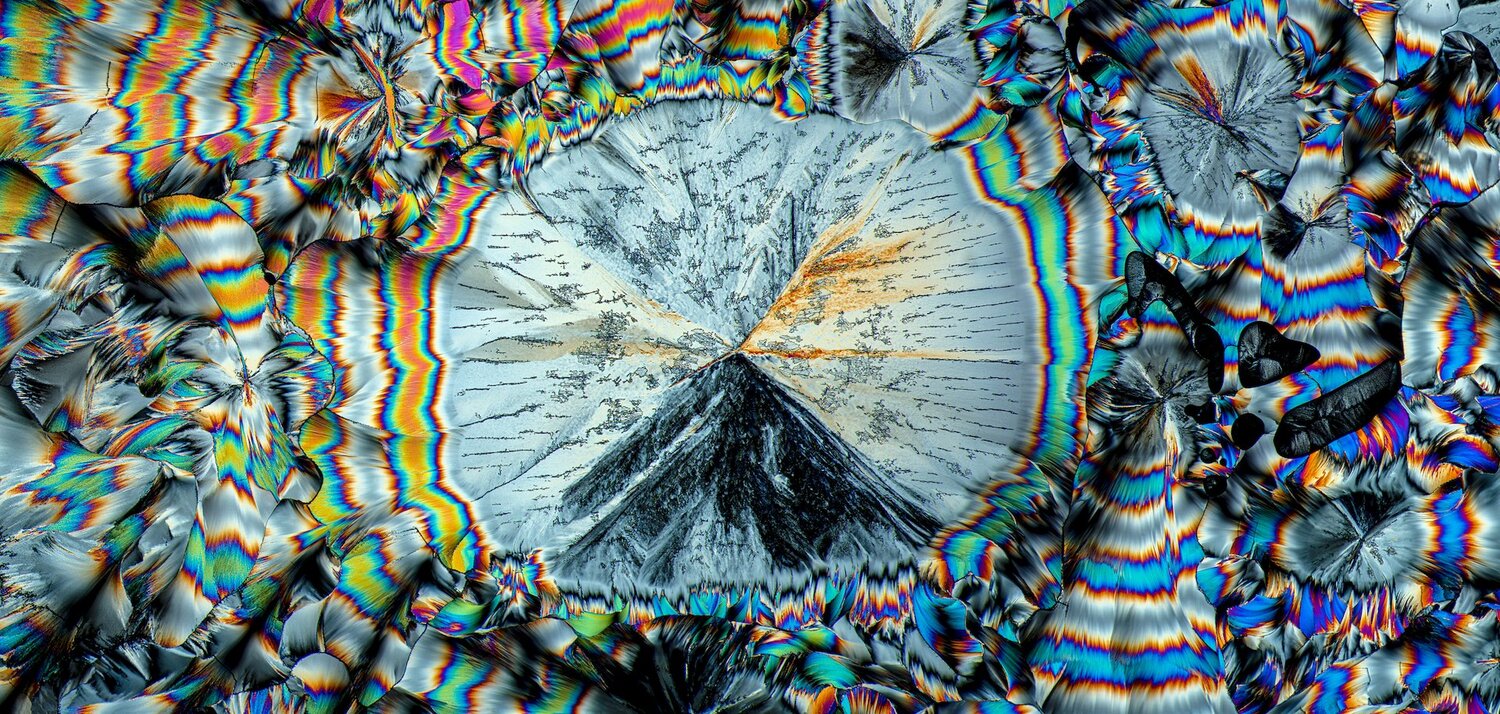
By Peter Juzak, Germany. Since the end of the 1970s I have been fascinated by the world of microcrystals. I took this picture in my flat in autumn, 2019. Hippuric acid is a colourless substance and only when it is placed on a microscope slide and allowed to crystallise under polarising light does it reveal its spectacular world.

By Henri Koskinen, Finland. There is a small pond near my house with crystal clear spring water. It is filled with frogs every spring and it is one of my favourite spots to spend a morning with my camera. Frogspawn creates visually interesting abstract patterns when viewed really close.
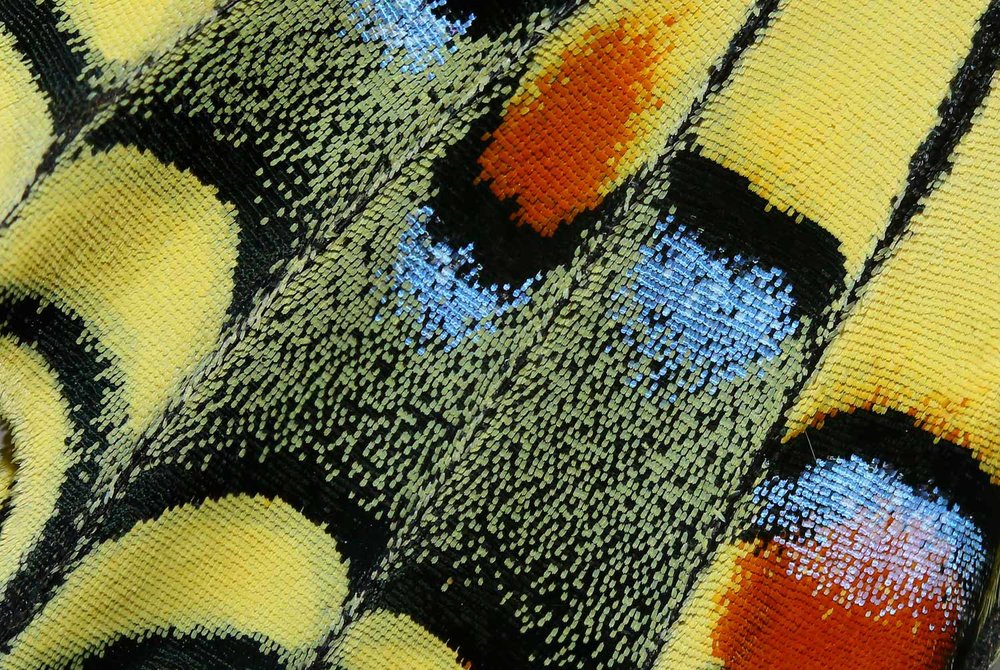
By Hasan Baglar, Cyprus. This detail of the swallowtail butterfly wing reminded me of a hand woven carpet. I took a lot of photos to try and capture this image in a single frame while the butterfly rested on a branch under a cloudy sky.
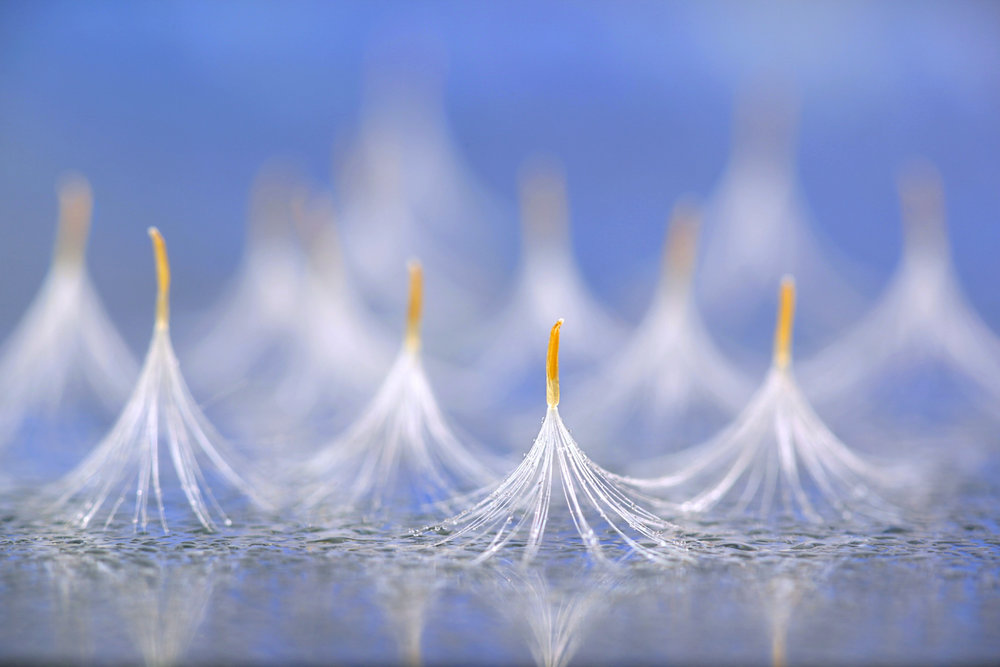
By Henri Koskinen, Finland. I tried a number of compositions of seeds hoping to create the impression of ballerinas on a stage. The seeds of coltfoot are so delicate and light that I had to spray them with water to keep them still and stop them from flying away! I shot them on a semi-reflective surface as I wanted to create an airy feeling, and I used a background of blue sky and white clouds that I painted myself using thin, transparent watercolours.
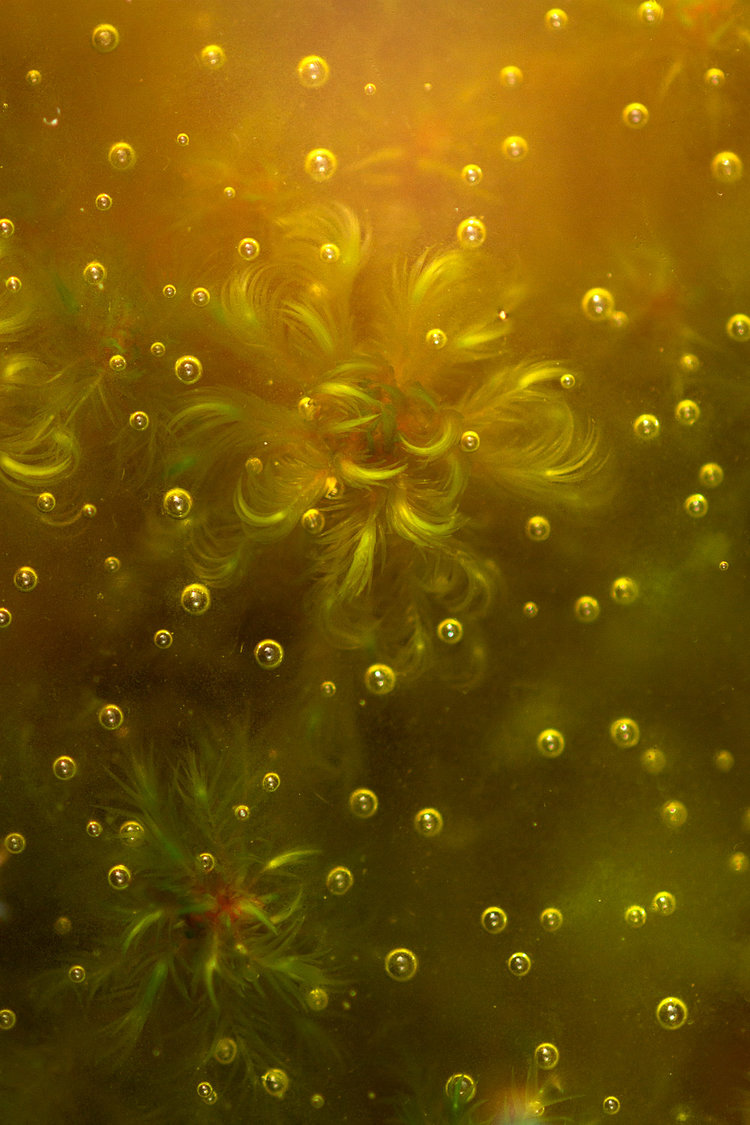
By Tina Claffey, Ireland. I am a nature photographer fascinated by the bogs and wetlands of Ireland. This Feathery bog moss was frozen in the bog pool after a heavy night of frost. The moss extended its limbs in suspended animation, surrounded by frozen oxygen bubbles.
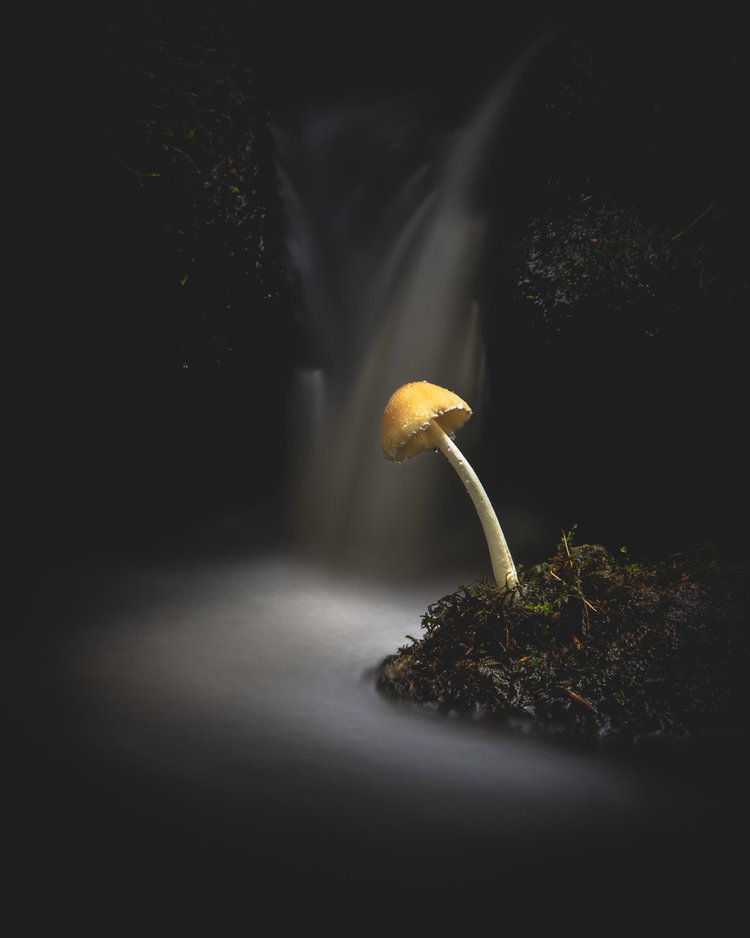
By Jay Birmingham, Britain. In Wyming Brook , I spotted a small mossy island with a solitary mushroom growing on it. Even better, there was a small waterfall behind. I crouched as low down in the water as I could to position the mushroom in front of the waterfall.
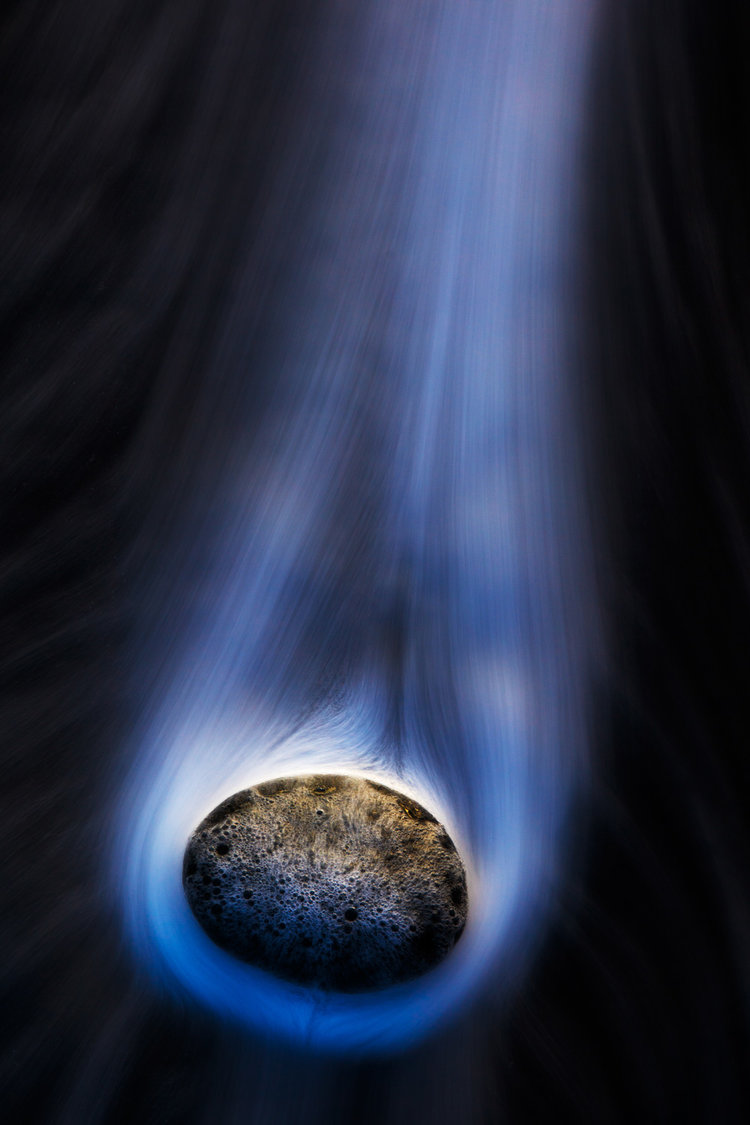
RADOMIR JAKUBOWSKI, Germany. This picture was taken during one of my workshops in the Canary Islands. As beautiful as the landscape was, I wanted to escape the obvious images of beach, sea and sky, so I turned my attention to the small details of the beach. I took the picture at sunrise, when the water turns a remarkable blue and the stone reflected the warm orange tones. As the wave retracted around the little stone, the foam created an interesting contrast against the black sand.

By Petar Sabol, Croatia. By Petar Sabol, Croatia. I had spent the morning looking for some macro subjects but couldn’t find anything interesting. Disappointed, I decided to go back home. As soon as I put my gear into the trunk of the car, I spotted this beautiful swallowtail butterfly bathing in the sun. I quickly grabbed my gear again and carefully crept up to the butterfly with my camera and tripod. I remained some distance from the butterfly in order to get a nice background blur.

By Hakan Kvarnstrom, Sweden, Risk Officer. Working with micromolluscs requires great care, patience, and persistence, as they are so tiny. But despite being only about 2–3mm in size, they have a beautiful and elaborate structure. This shelled mollusc was found in a marine water sample collected from a fish farm in Stockholm. By using fluorescence microscopy with ultraviolet light, the microalgae and cyanobacteria that grow on the surface of the shell are autofluorescing in red and orange, while the shell is blue.
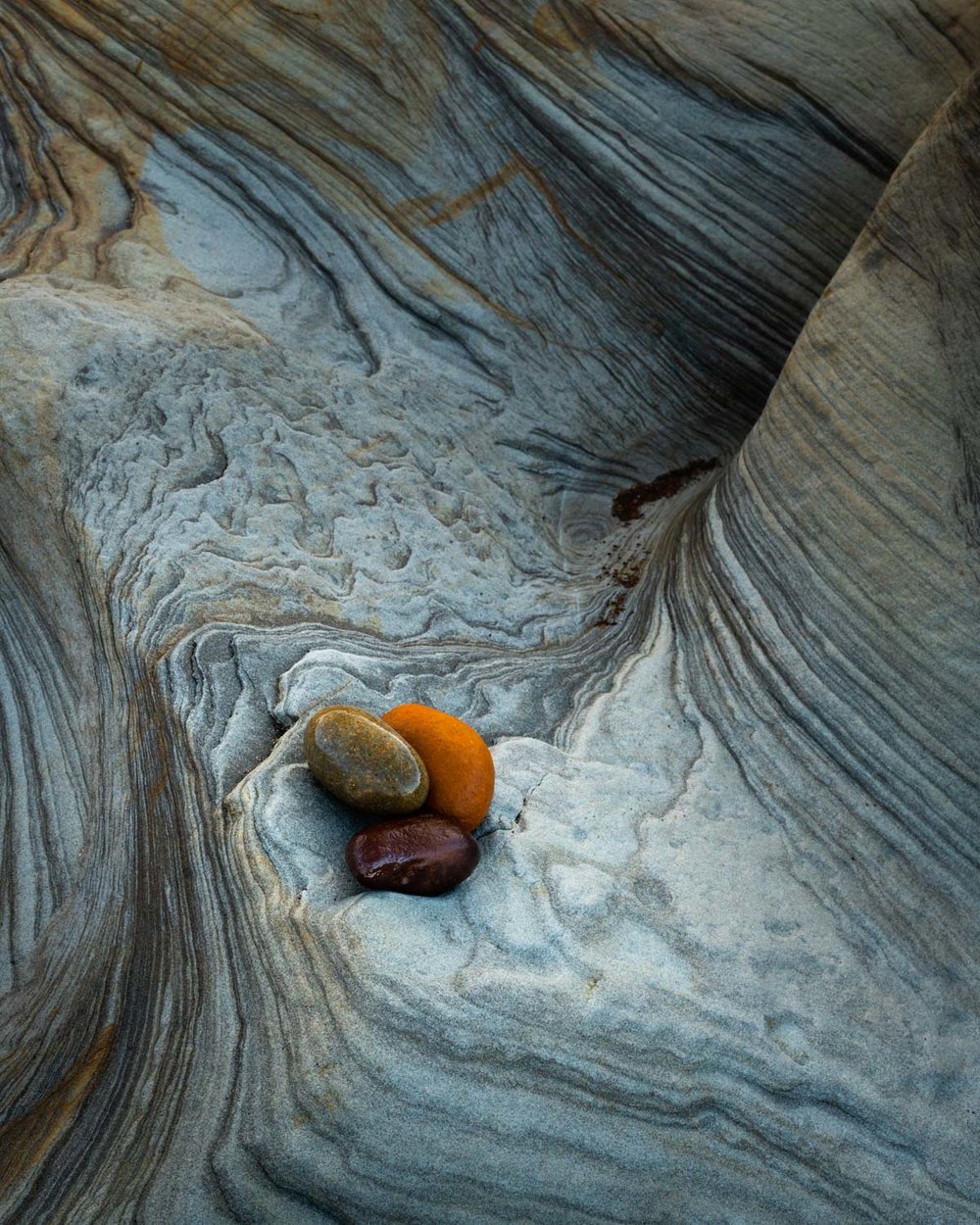
By Greg Whitton, Britain. Pebbles was taken on Spittal Beach in Northumberland, UK. Swirls and geometric patterns are everywhere – you can lose yourself for hours in an area no larger than a squash court. On this day, the tide had receded and left the rock wet and clean. It was perfect for getting low and spending time finding the very best compositions.
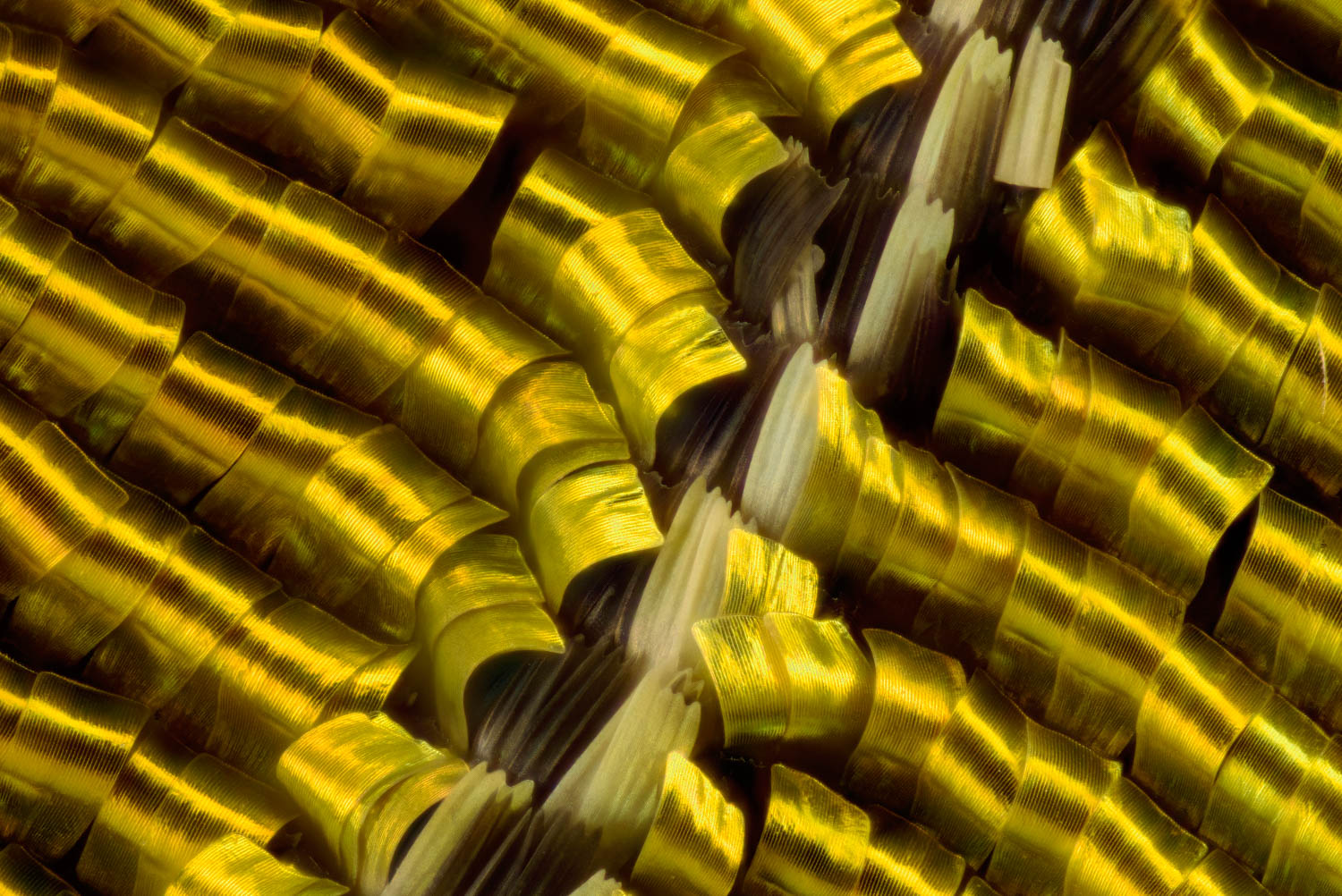
By Luciano Richino, Argentina. “This image of the wing scales found on a butterfly from Madagascar, was taken in my studio. My principal objective with these photographs is to show people the perfection of the small – the details, textures and colours that we cannot appreciate with the eye alone.” (He describes many technical things he did to capture the amazing detail represented in this picture.)

By Lizzie Shepherd, Britain. What caught my eye (in this reservoir) was the wonderfully chaotic assortment of willow trees growing in the water’s edge. I was entranced by the intricate, reflections of the branches and twigs – almost like a delicate ink drawing.
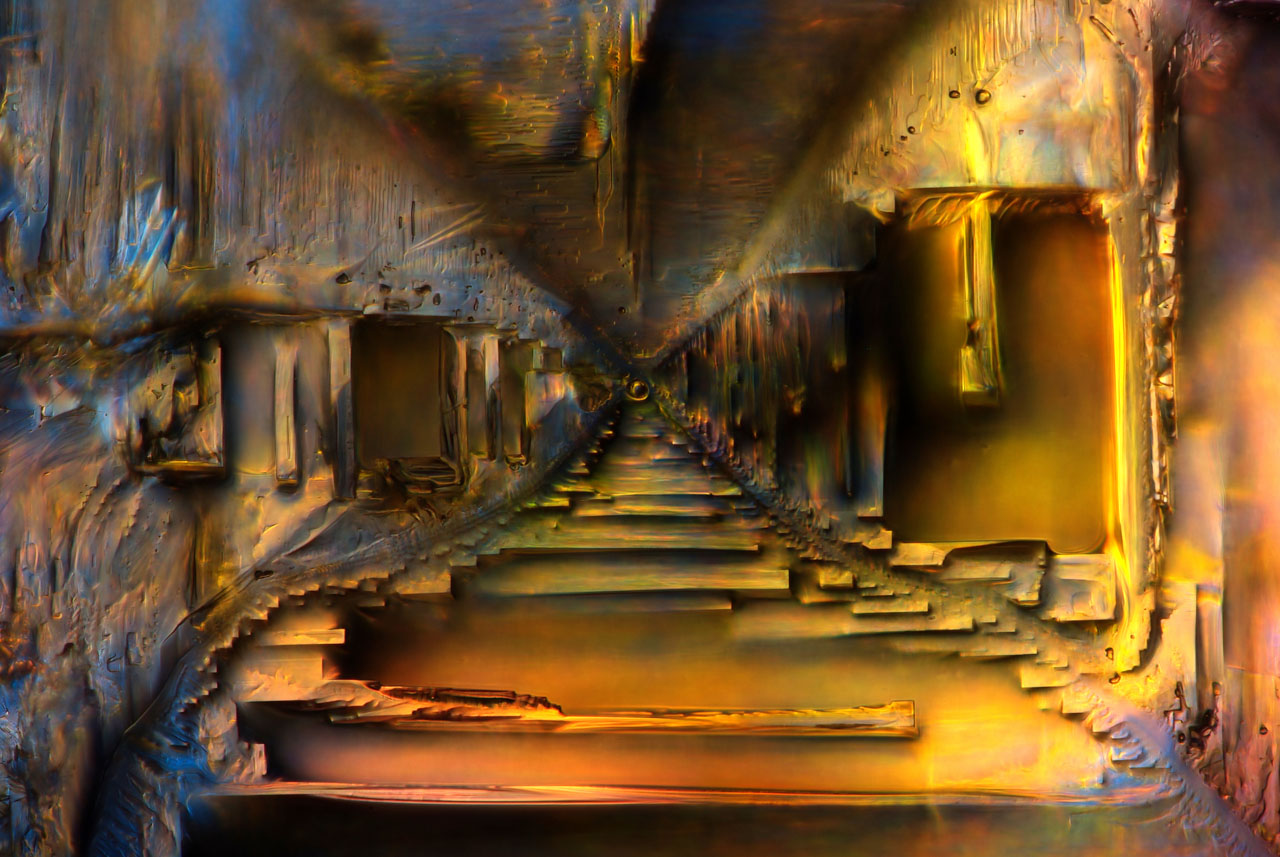
By Mis Marek, Poland. I prepared a concentrated solution of water, sugar and salt on a microscope slide and left it for several hours until the water had evaporated. In amongst the many tiny crystals of the whitish substance left behind were a few larger crystals. The centre of one of them became this image.
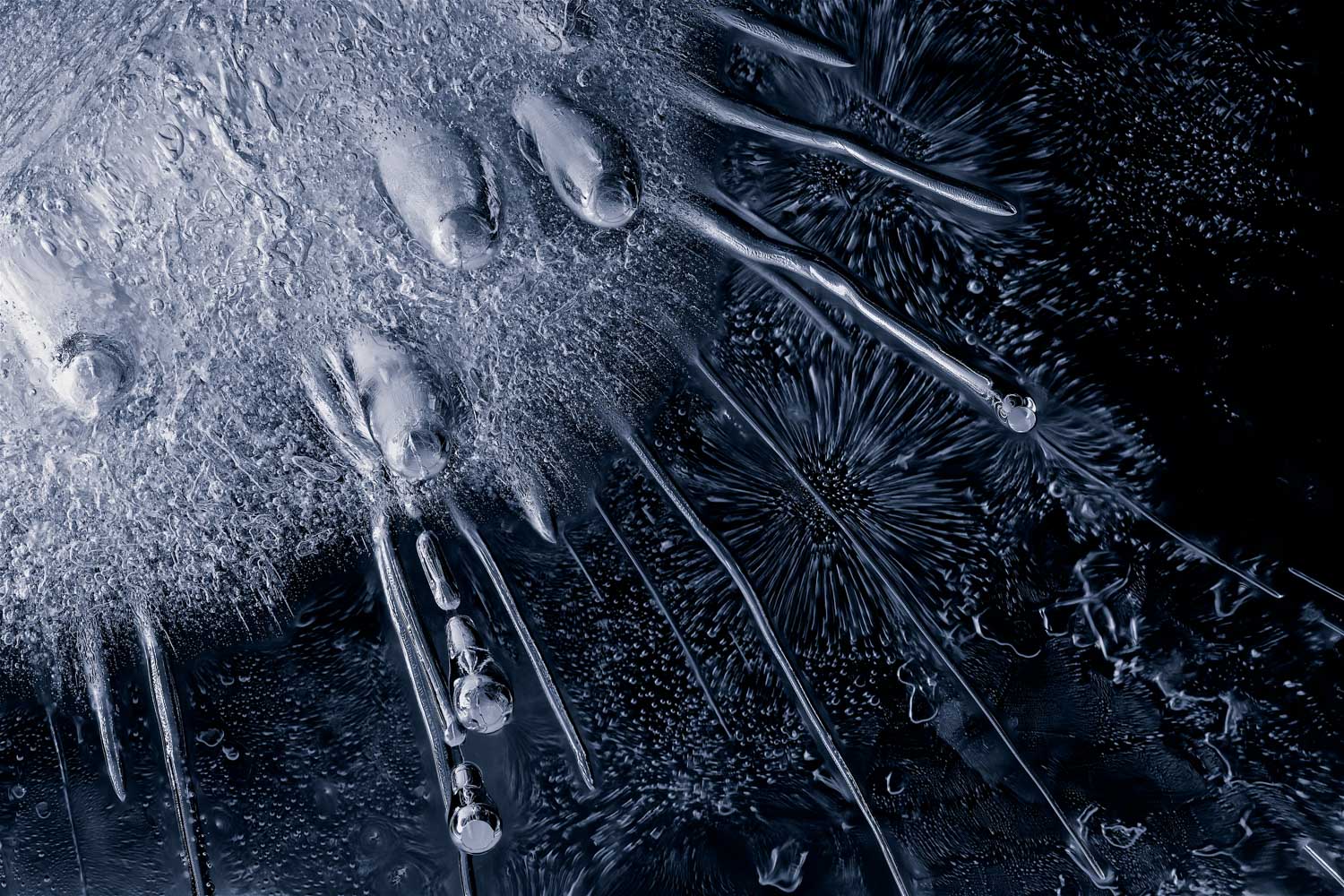
By Simon Gakhar, Britain. Semi-Retired Explosion Safety Consultant. When air is trapped in water it naturally forms interesting patterns as the water freezes. I have found through trial and error that you can influence the type of pattern to some extent by using different amounts of aeration in the water, or by adding fizzy water to still water before freezing. Freezing at different rates also alters the pattern. (Why have I never really looked at the pattern inside an ice cube before?)
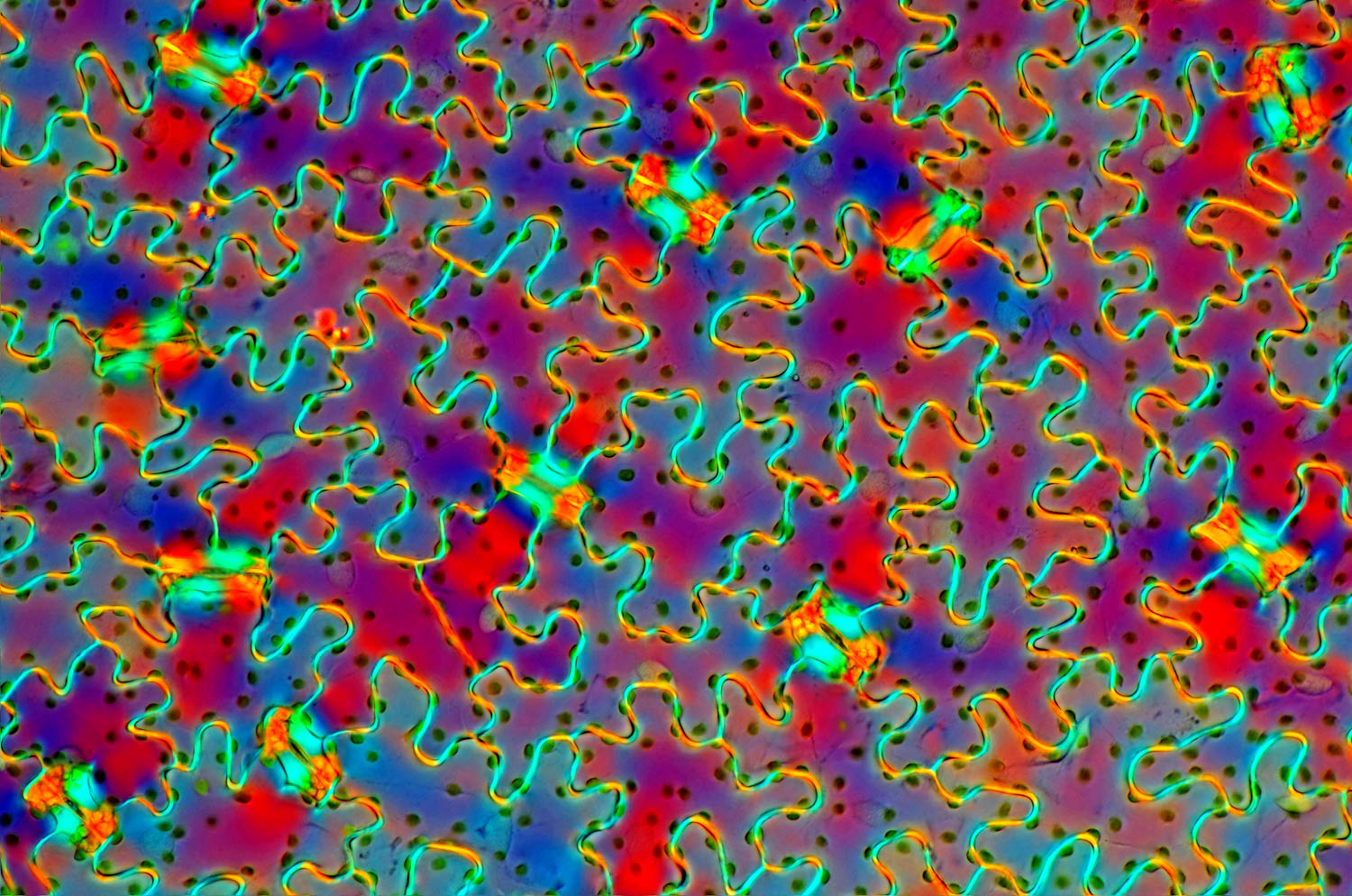
Mis Merik, Poland. The tissues seen here are epidermis cells and stomata cells from a Hepatica leaf. If the cells are observed in bright field illumination they are not that interesting, but by using polarized light, the colourful, puzzle-like pattern of the epidermal cells is revealed.
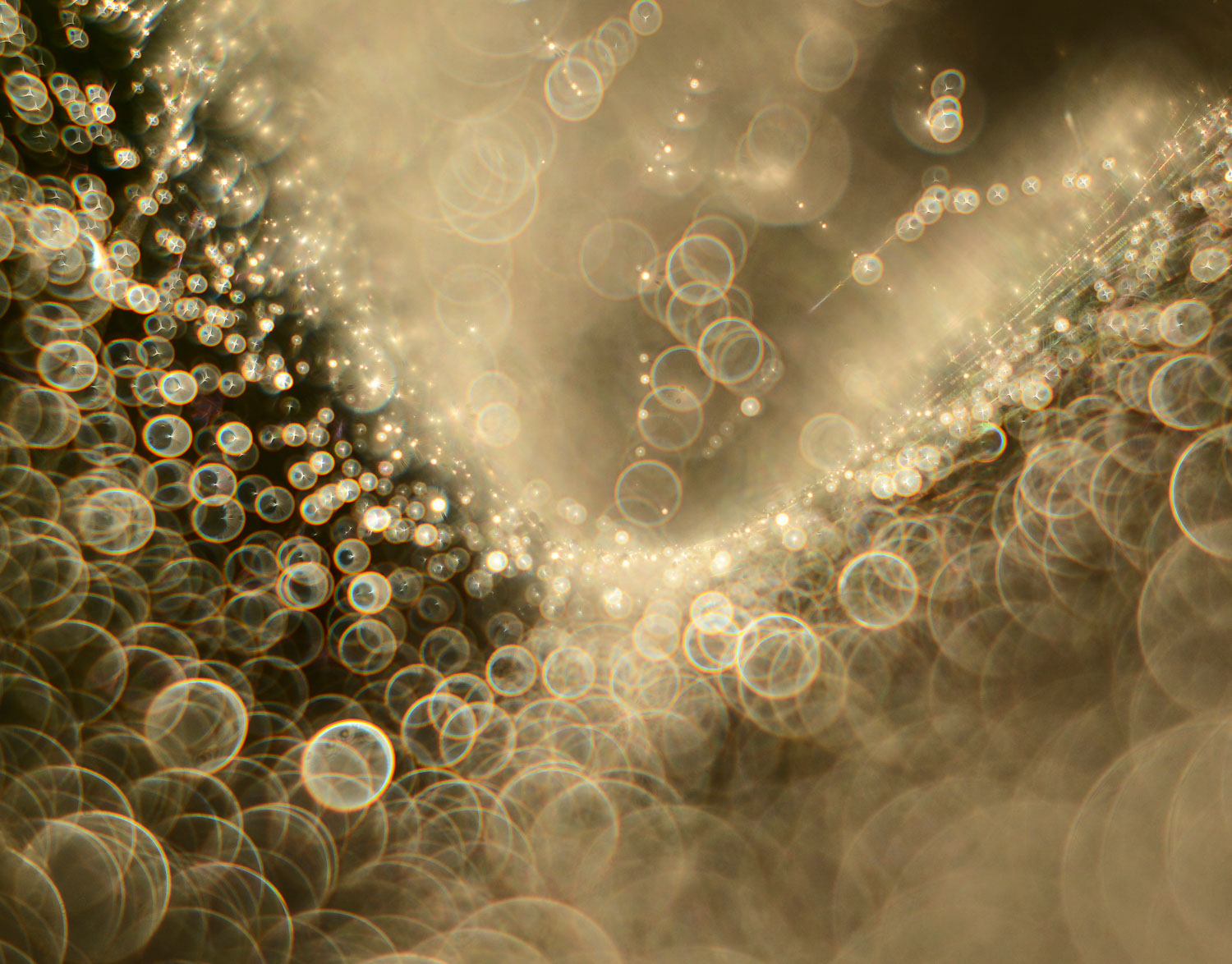
By Carolyne Barber, Britain. ‘I am a hospice nurse who loves photography and capturing the natural world around me. Photography enables me to bring some joy to our patients who cannot go outside. This beautiful spider’s web, found on a fence in the hospice garden, looked dazzling with the backlight from the rising sun shining through the dewdrops.

By Gerd Guenther, Germany. ‘It is a constant enjoyment for me to explore the inner structures of common objects or materials. Using a microscope gives me the ability to visualize structures unseen with the naked eye. A guitar string is a very common object, but when you cut a longitudinal section and use a microscope illumination used for material science, the beauty of this subject is made visible.
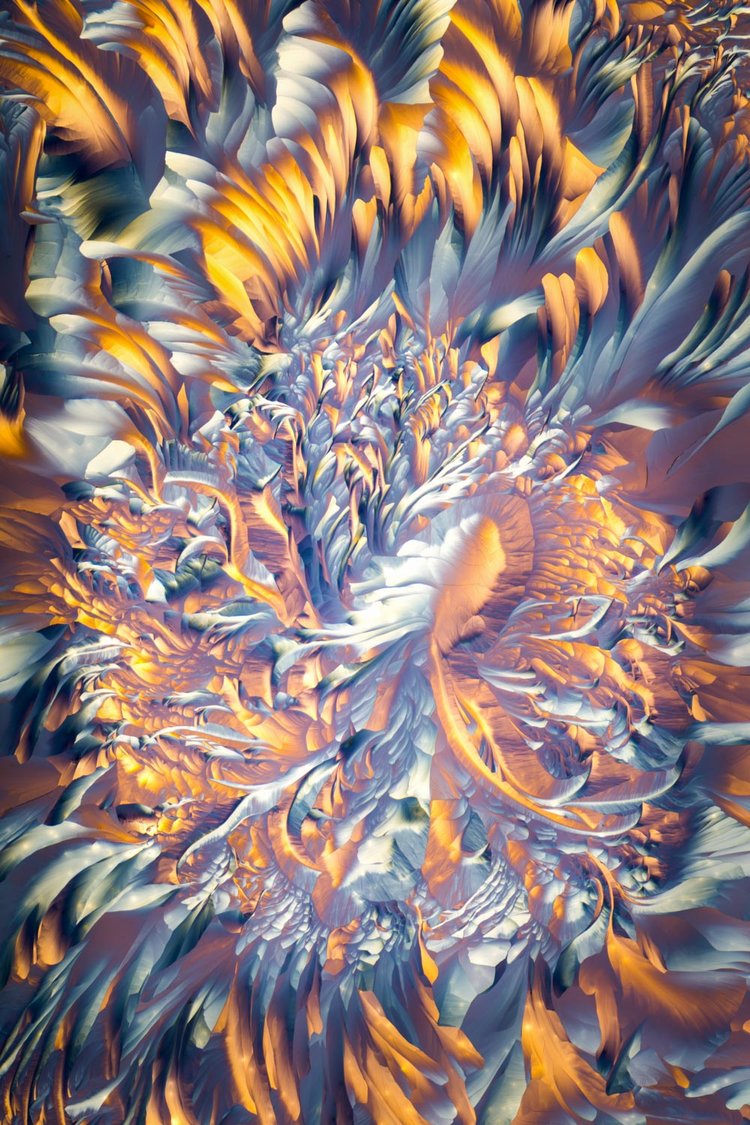
By Justin Zoll, US. Bartender and Photographer. I do all of my experimentation and work in my bedroom. In this case, amino acids were dissolved in high-proof vodka before being distributed onto a glass slide and allowed to evaporate. The colours in the resulting crystals are due to the interaction of polarised light and the birefringent properties of the crystals. One of my polarising filters is the lens from an old pair of sunglasses!
Less Detail
Minimal Photography
Not all minimalist photography is black and white. And the images presented here go beyond black and white, highlighting an emphasis on simple line and form. I love it. These are my favorites from the first edition of the Black and White Minimalist Photography Awards presented by Minimalism Magazine.
Thanks to Claire Elizabeth for getting me started on Close Up photography and to CUPOTY.
And thanks to Minimalism Magazine for sponsoring the Black and White Minimalist Photography Awards for 2020 – 2021.
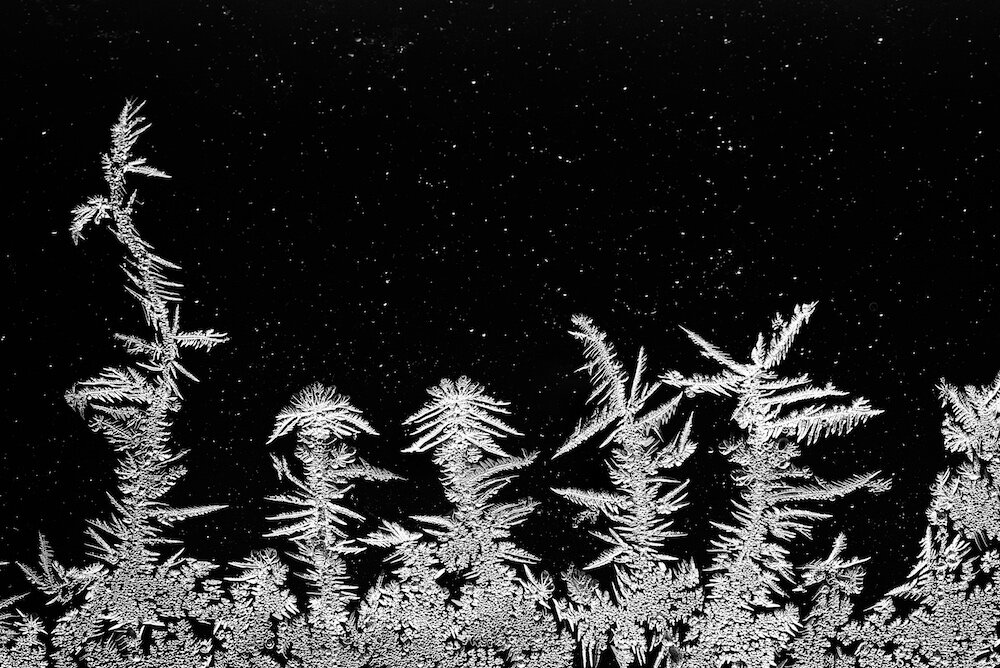
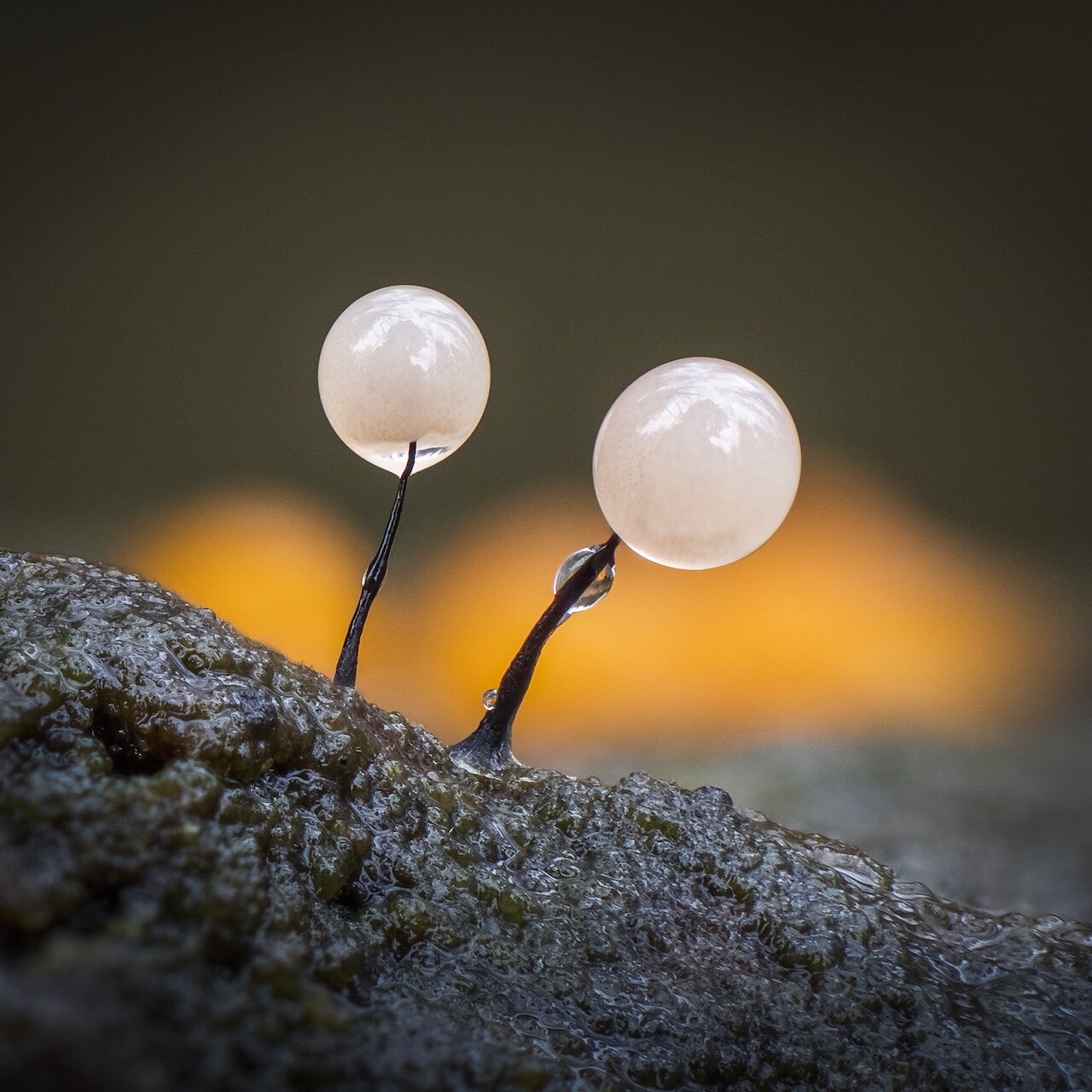
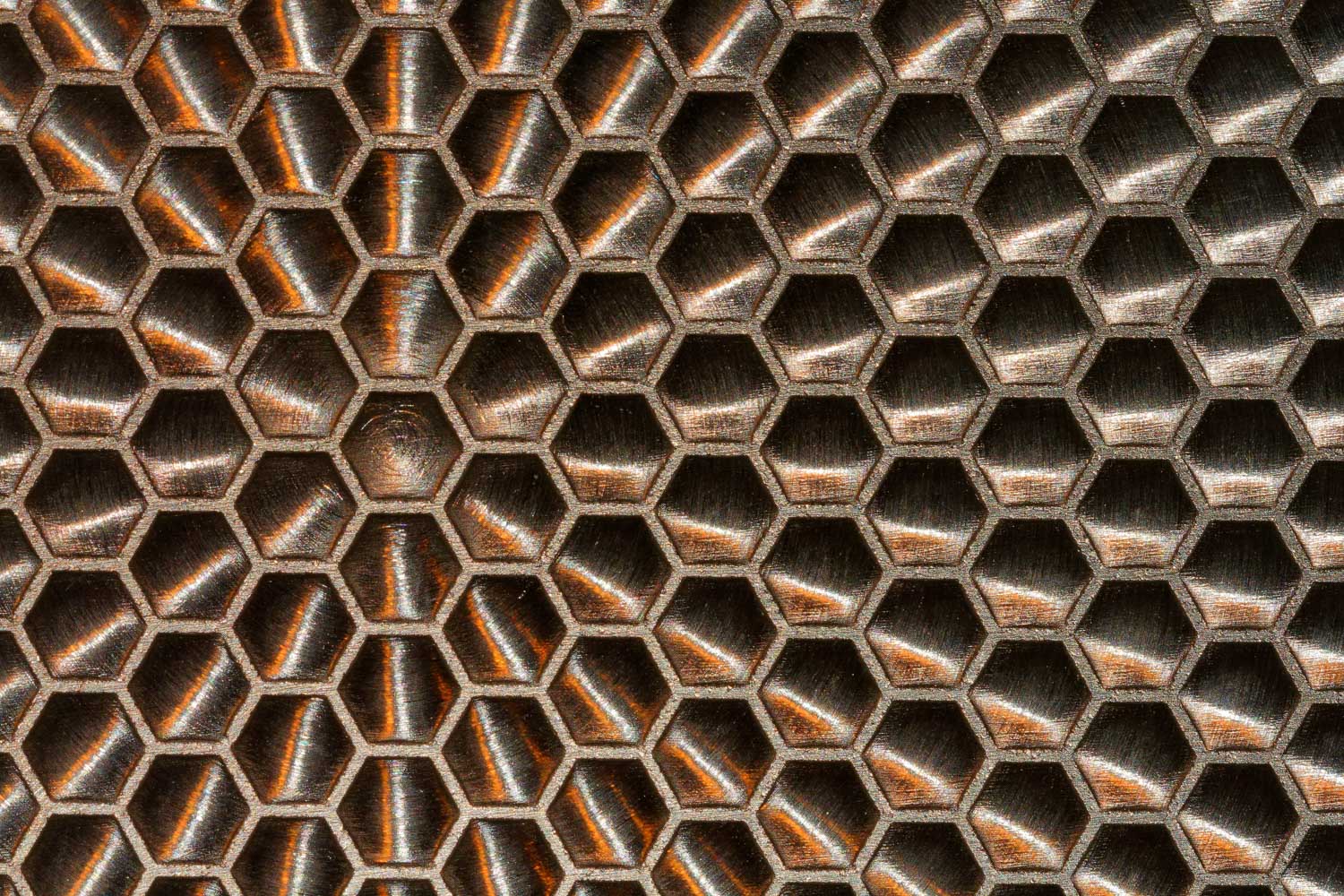
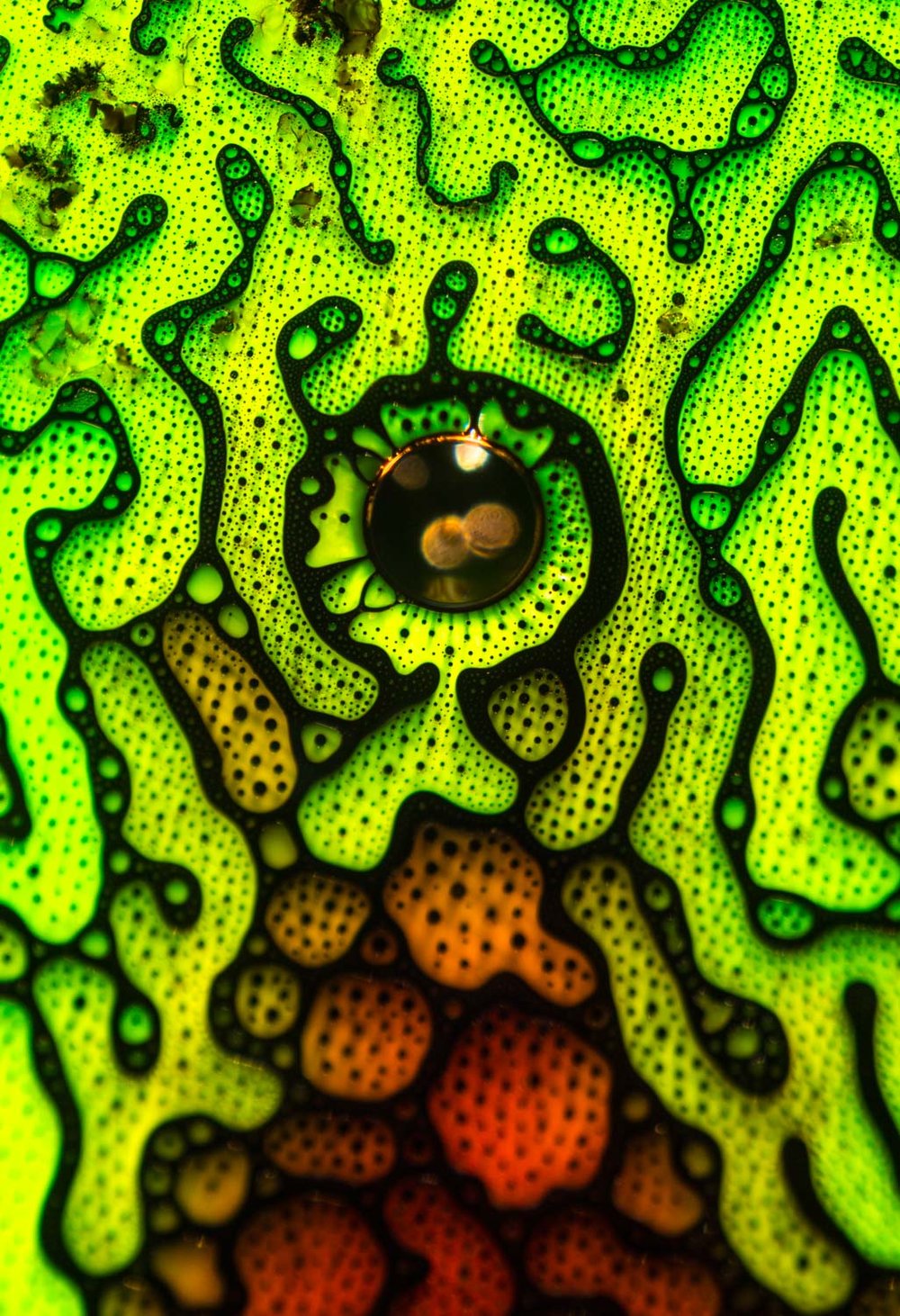

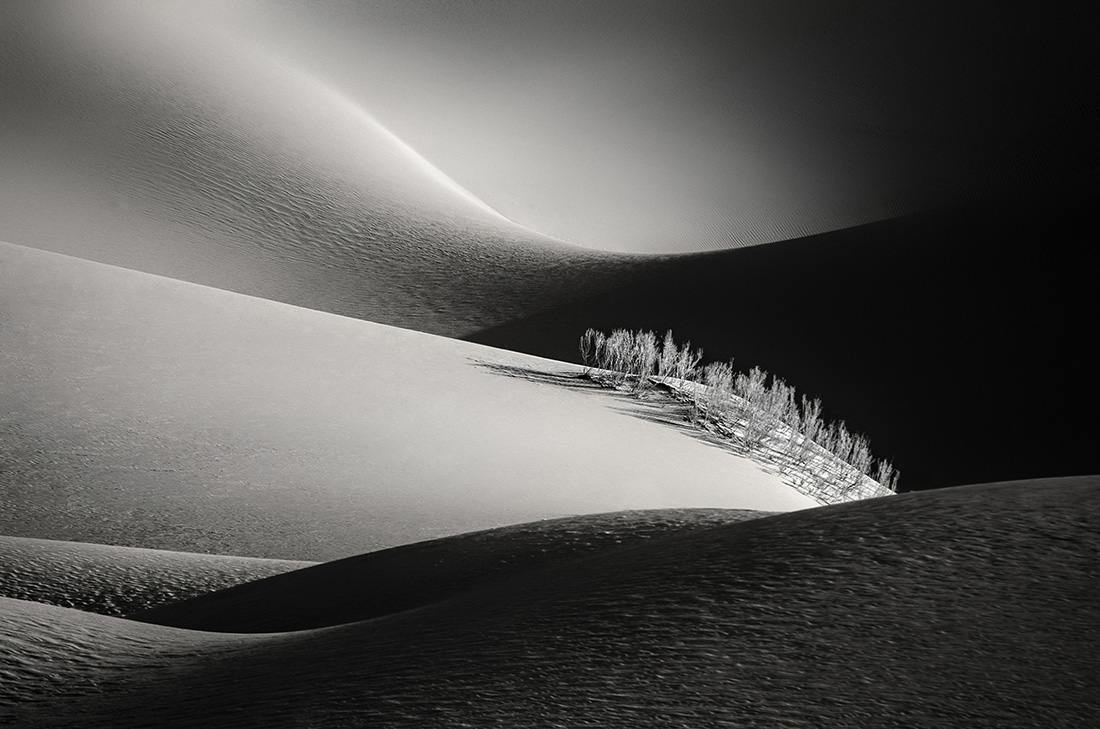
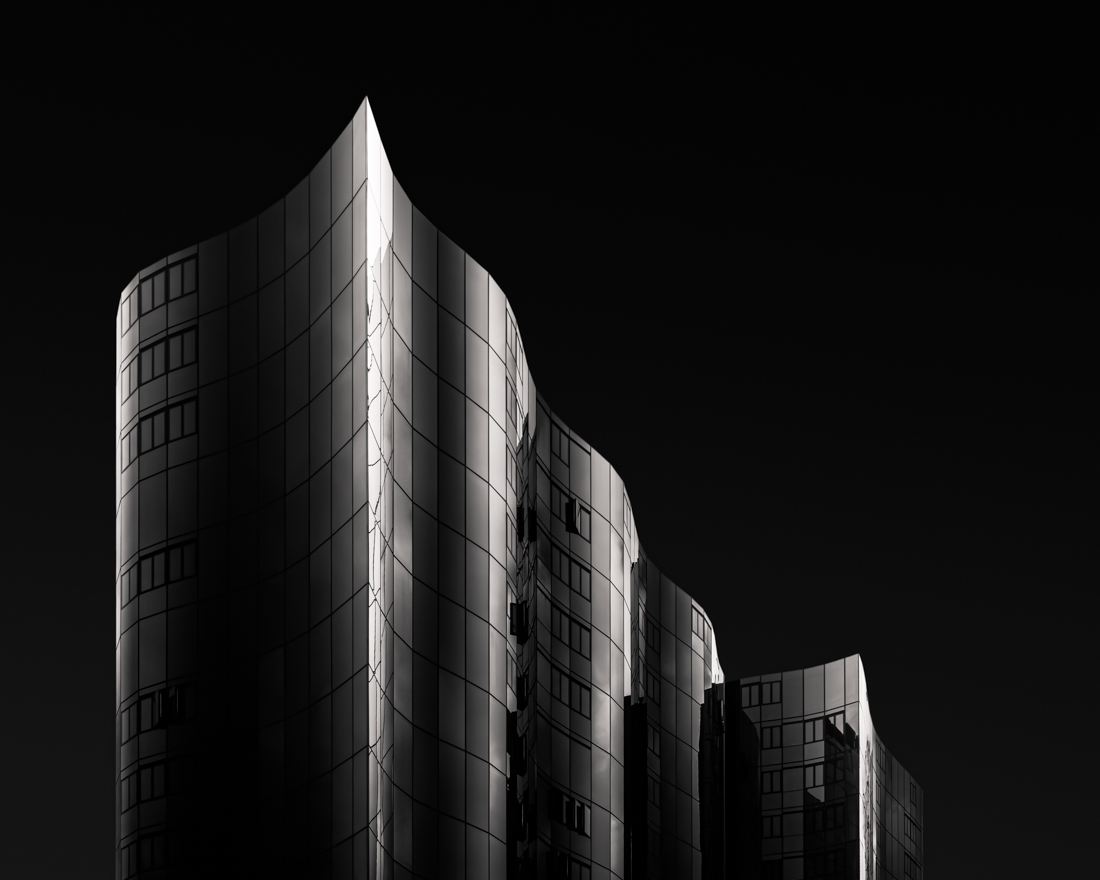
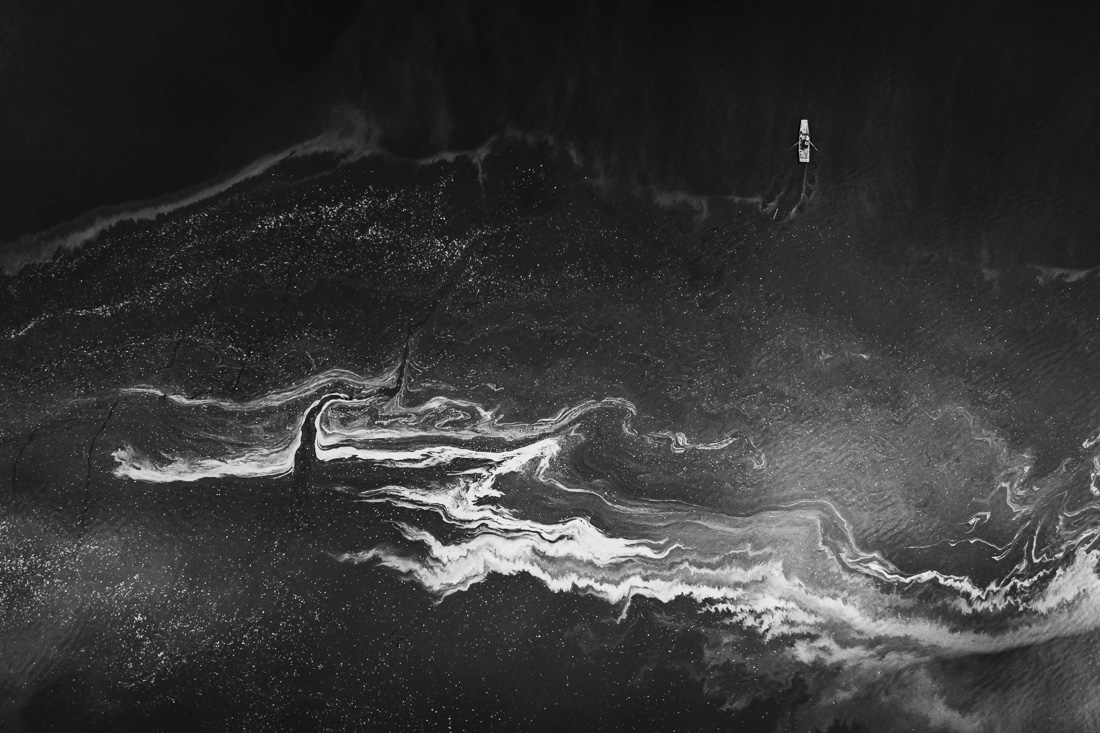
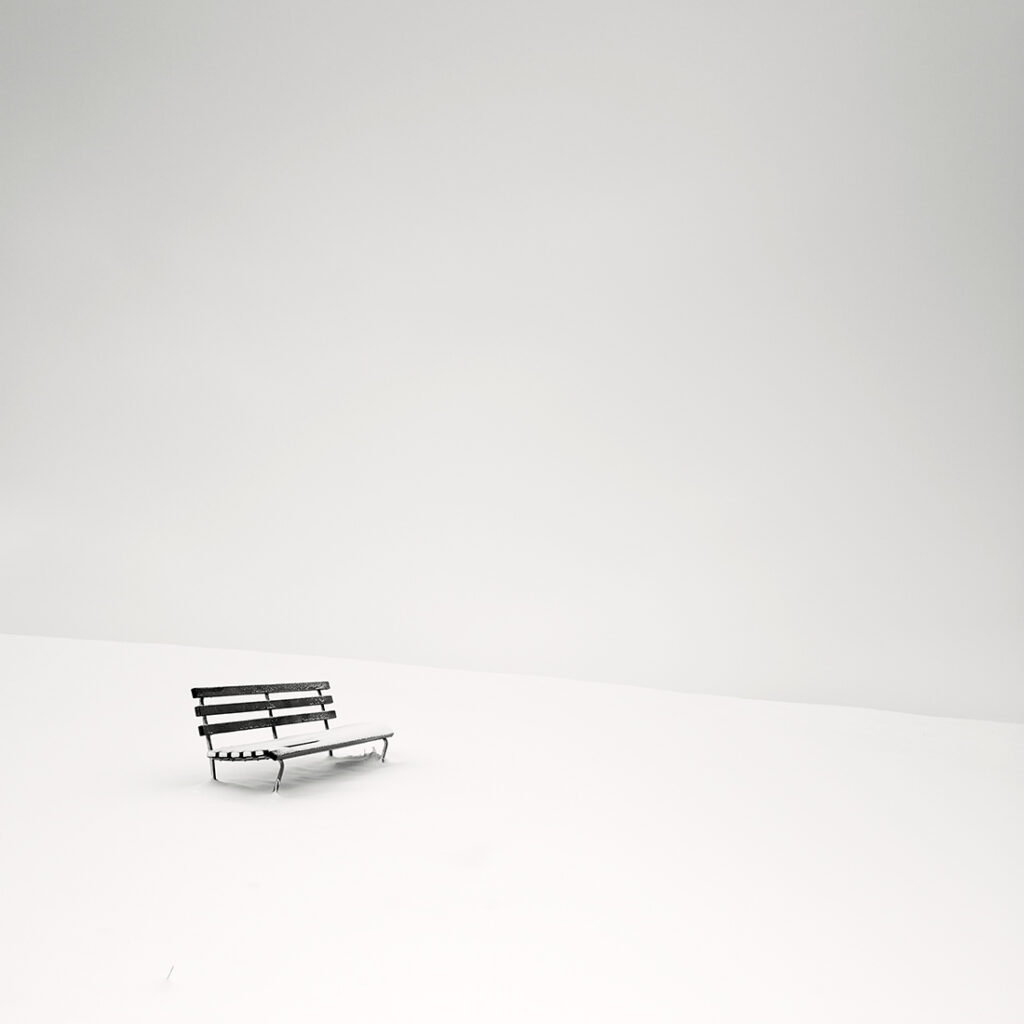

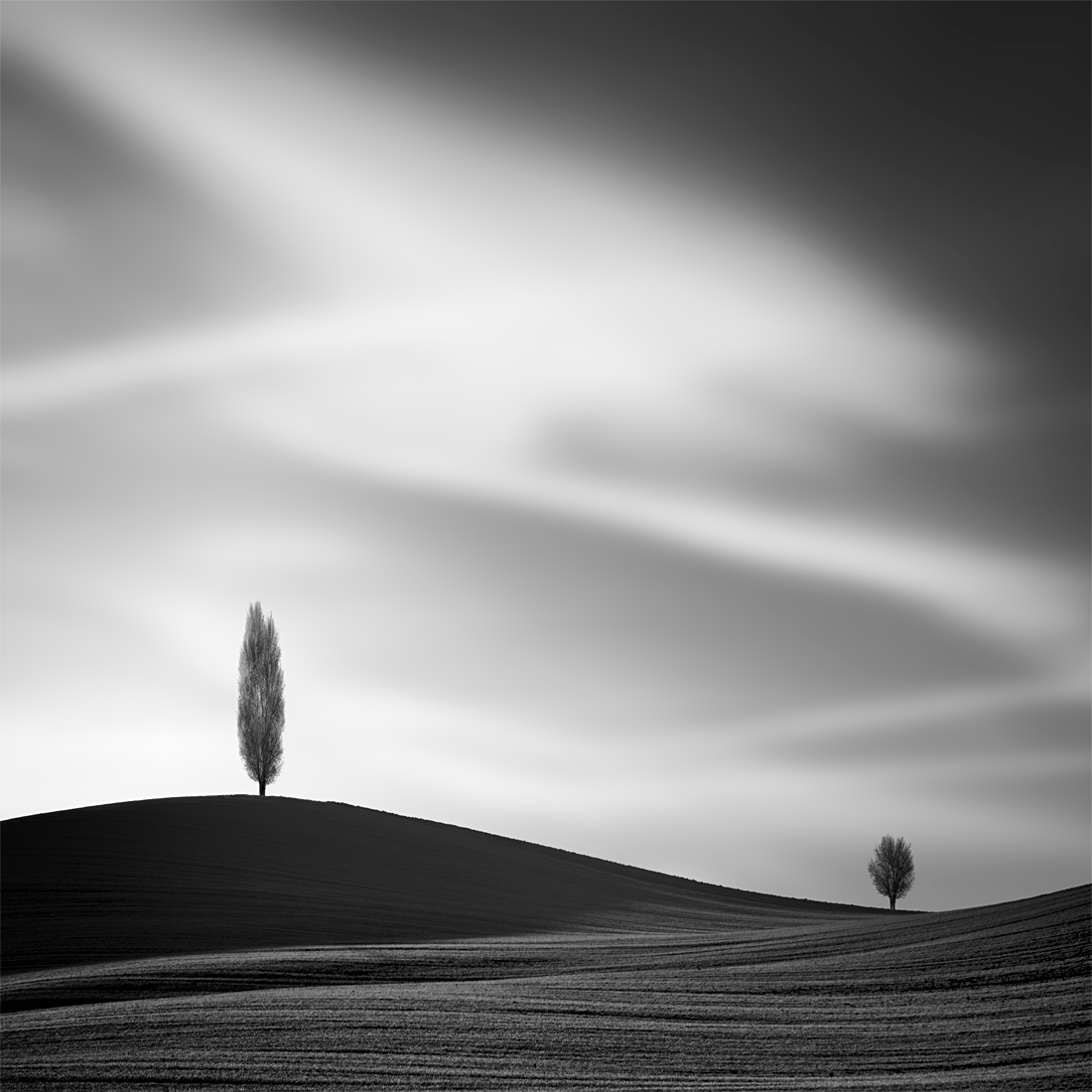
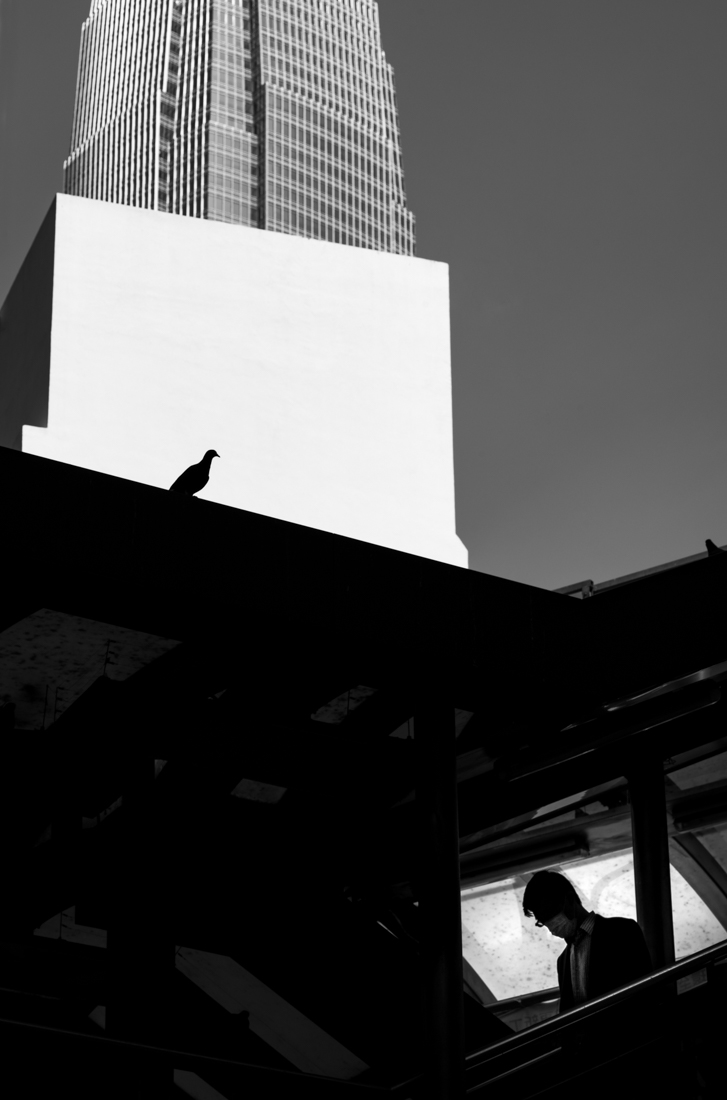
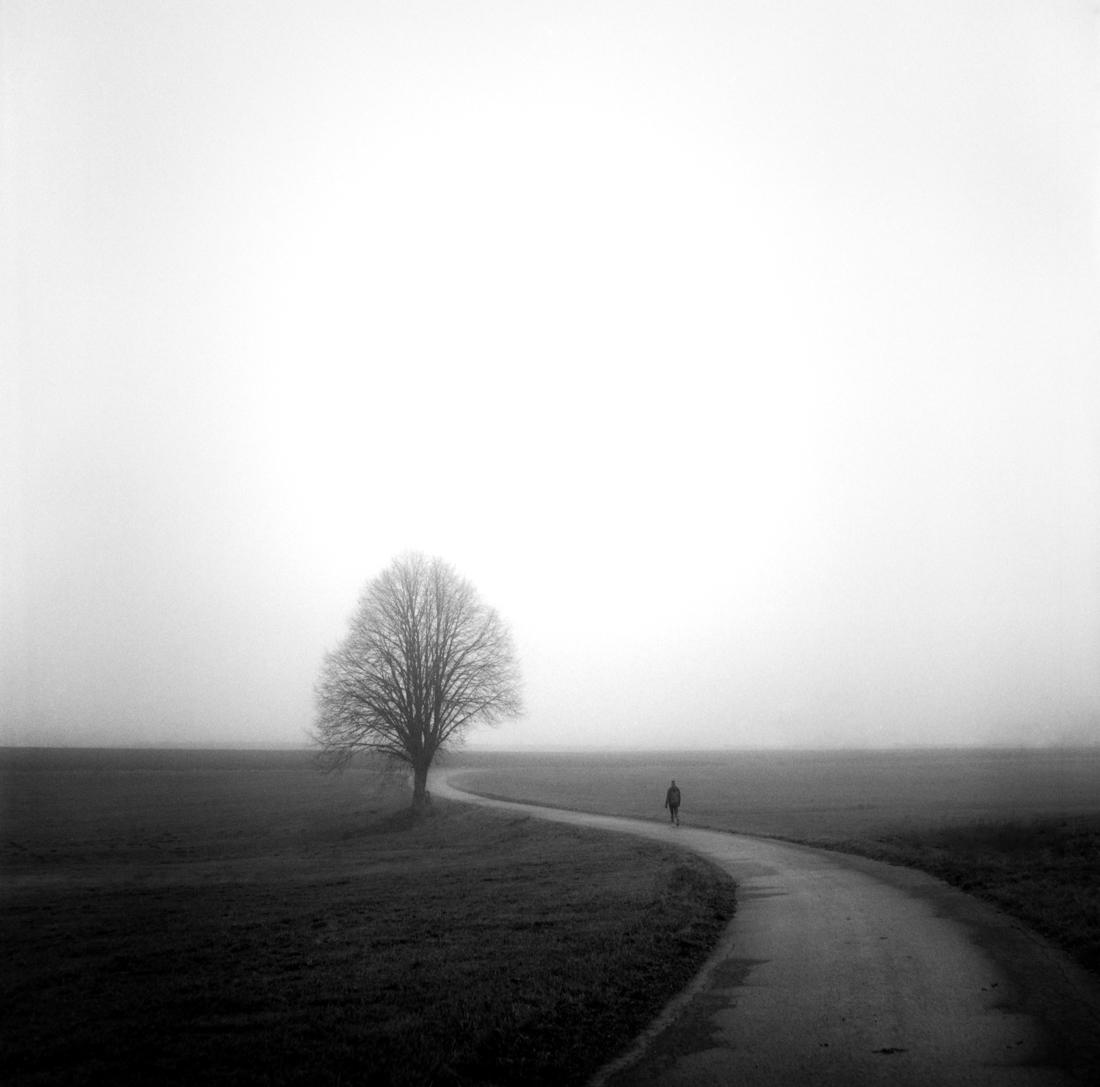

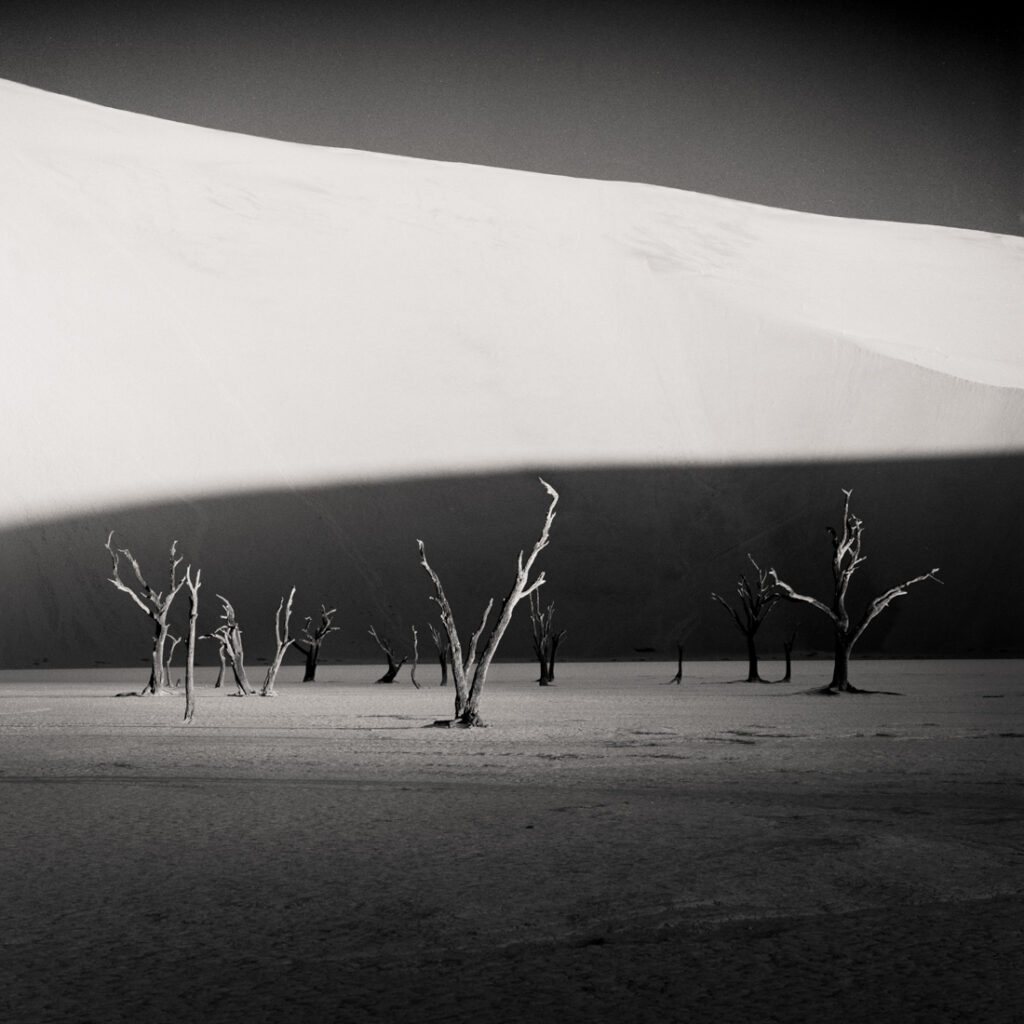

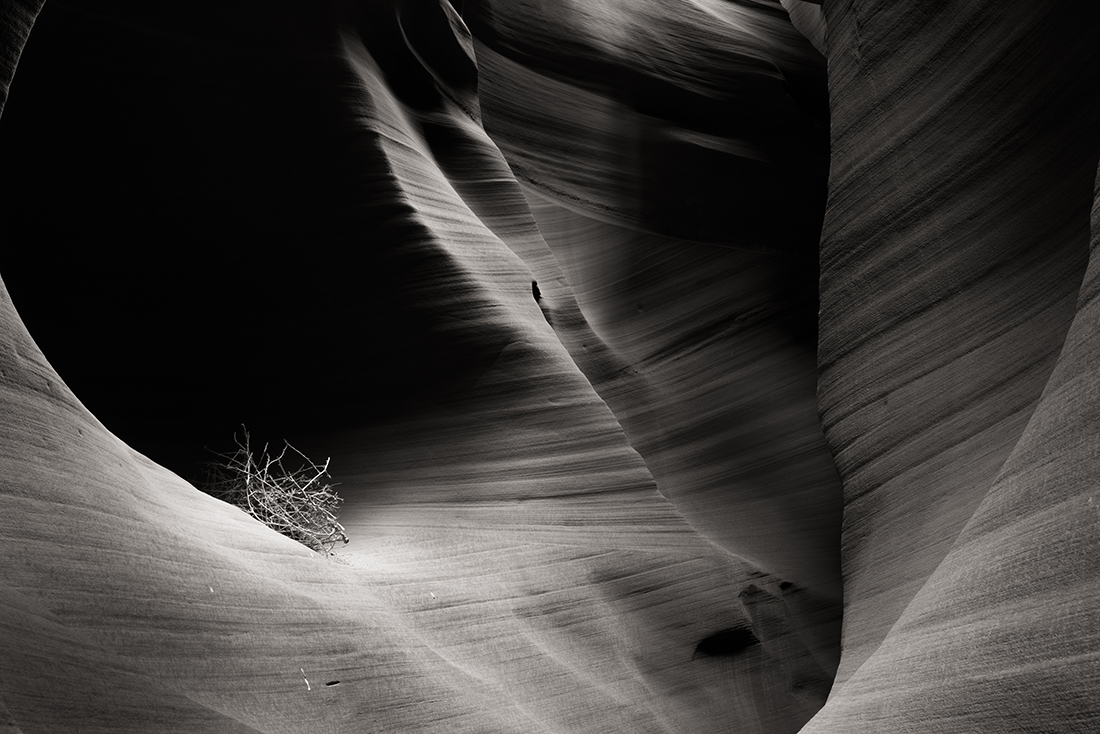

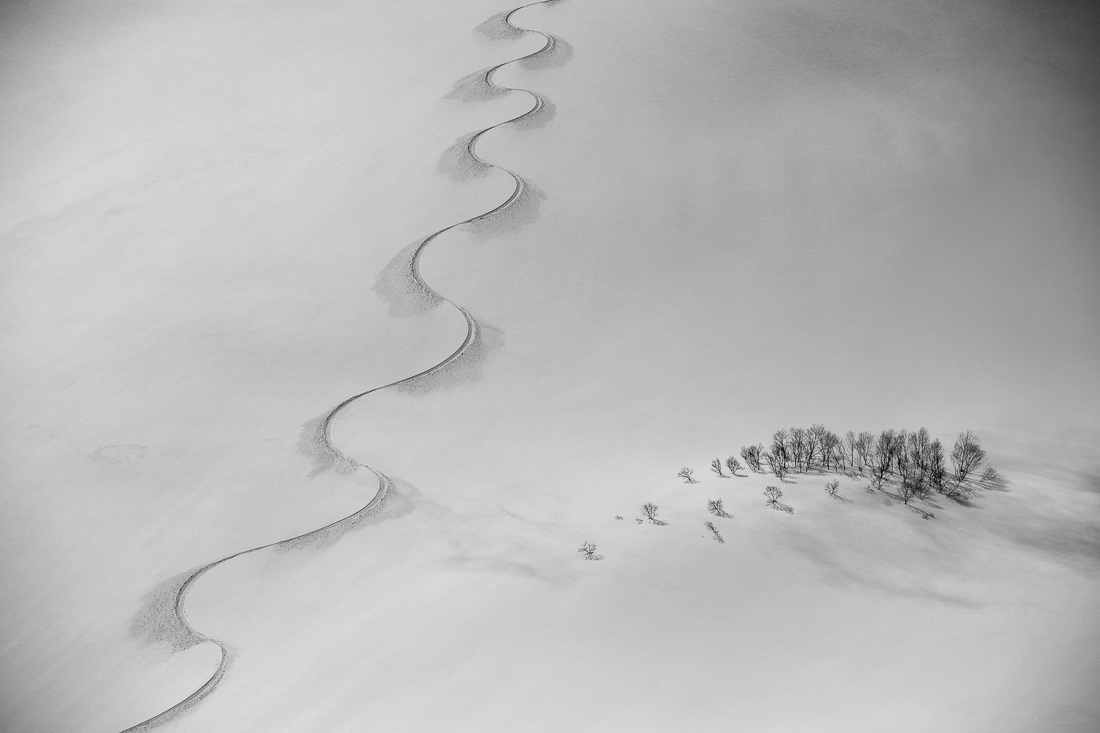
Wonderful
I love this site. I look forward to every new series. Truly amazing photography. Thank you so much. I love the excitement of seeing
Dustyswondersite in my inbox. Thank you for your awesome display of unique photography art form!
Thank You ~
Thank you once again just, wonderful love, seeing them all
THANK YOU FOR REMEMBERING ME AGAIN!!!!!
You’re the best! Just when I need a lift up from the depressing things going on in this world, I get a Dusky gift. Much thanks.
Thank you Dusky for the beauty. I admire your generosity of allowing us to save your wonderful discoveries.
Dankjewel voor het zichtbaar maken van Gods schepping, dat het gewone ook niet ziet.
Had a wonderful verbal presentation relating colour to sound – as in the 12 note scale, by an artist friend, yesterday. Now this amazing colour built into the tiniest corners of creation expands my wonder. Perhaps even there sound could be found, if only we had instruments to record it. Thanks to the Creator and now to Dusky for showing it.
Having done some macro and nature photography in the past I was amazed by the images I saw here. Worthy of the Museum of Fine art.